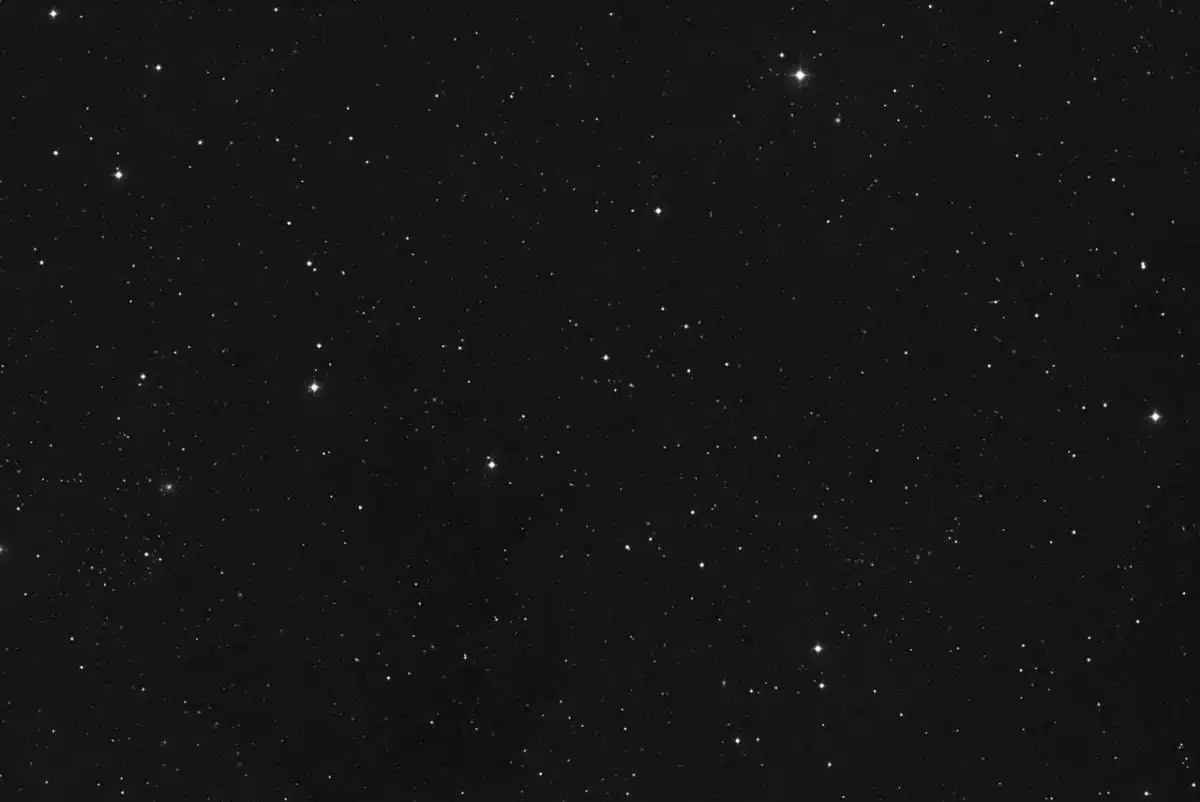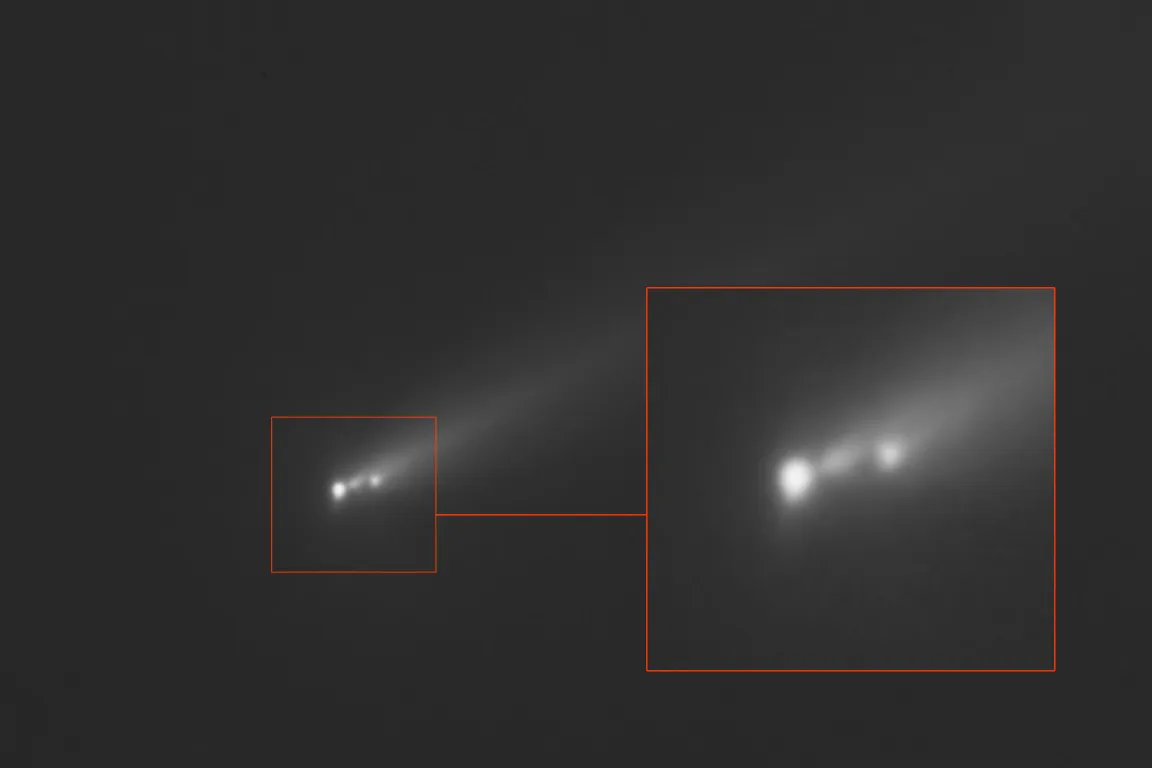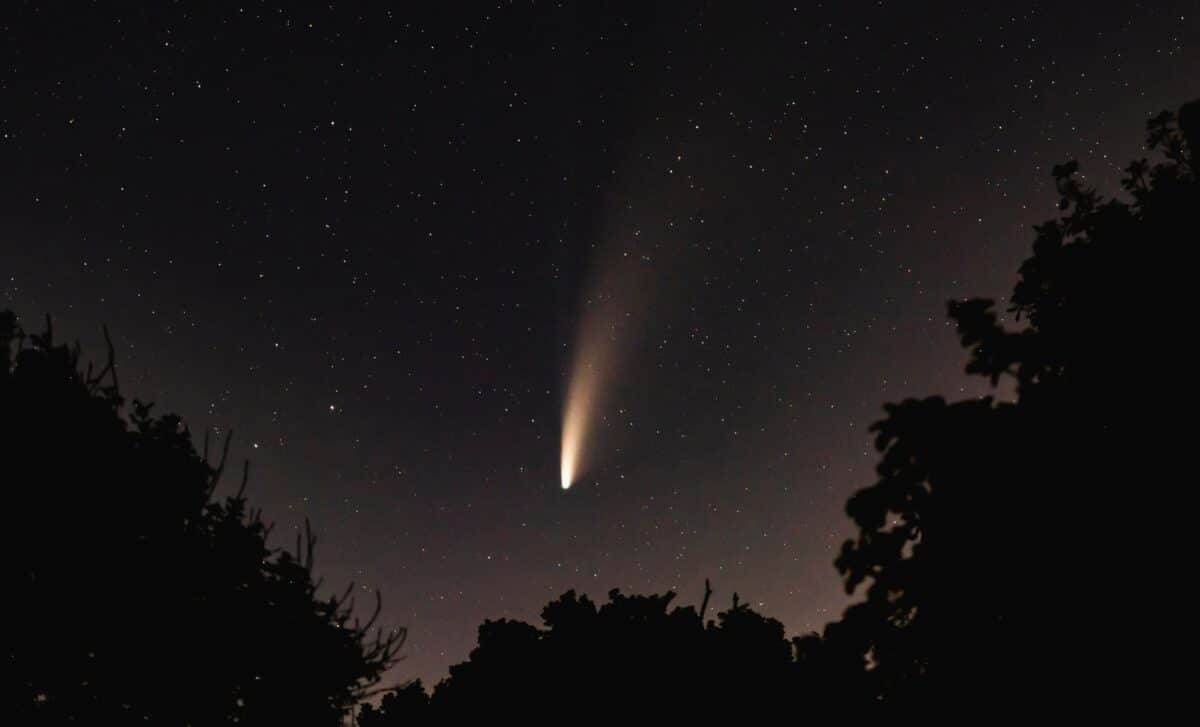A rare and mesmerizing comet event in our solar system has captured the attention of astronomers and sky-watchers alike. First spotted in May 2025, C/2025 K1 (ATLAS) comes from the Oort Cloud, the distant region of icy objects surrounding our solar system. It was during its recent close encounter with the Sun that the comet began to disintegrate.
According to the Virtual Telescope Project, which captured stunning images of the event, the solar system’s nucleus split into three large chunks, glowing fragments, creating a cosmic light show visible through powerful telescopes.
Fragmentation Revealed Through Telescope Images
Gianluca Masi, an Italian astronomer and founder of the Virtual Telescope Project, captured dramatic photos of the comet on November 19, showing its nucleus split into three glowing chunks.
According to Sky & Telescope, the images, which were taken using high-powered telescopes, reveal the fragments shining brightly in the darkness, reminiscent of a car’s halogen headlights. The event has garnered attention for its unusual nature, comets often fragment as they approach the Sun, but seeing such a dramatic split so clearly is a rare occurrence.
The process behind this fragmentation is rooted in the composition of comets. As they get closer to the Sun, the intense heat and gravitational forces cause them to heat up, melt, and lose material, sometimes leading to their breaking apart. While the celestial objects are typically known for their tail of gas and dust, the break-up of C/2025 K1 (ATLAS) is particularly notable because of the size of the fragments and the clarity of the event captured.
 Stunning view of the night sky filled with countless stars, capturing the vastness of the cosmos. Credit: TheSkyLive
Stunning view of the night sky filled with countless stars, capturing the vastness of the cosmos. Credit: TheSkyLive
The Uncommon Event of Comet C/2025 K1 (ATLAS)
Comets are made up of a mixture of dust, rock, and ice, and it is not uncommon for them to break apart when they pass close to the Sun. The intense heat and gravitational forces exerted on the cosmic body cause it to heat up and lose material, sometimes resulting in fragmentation.
In the case of C/2025 K1 (ATLAS), astronomers first detected signs of the comet breaking apart in late October and early November, with two visible outbursts of light. These observations were made possible by powerful telescopes, including those used by Gianluca Masi and the Virtual Telescope Project.
In the photographs, the fragments glow brightly against the blackness of space, much like the halogen headlights of a car cutting through the dark.
“Comet C/2025 K1 ATLAS experienced a dramatic fragmentation event, becoming one of the most interesting objects of its kind seen in recent years,” Masi wrote in a blog post.
Originating from the Oort Cloud
C/2025 K1 (ATLAS) was not an interstellar visitor. Rather, it hails from the Oort Cloud, a vast region that stretches far beyond the orbit of Pluto and contains icy bodies that occasionally make their way into the inner solar system. Once it slingshotted toward the Sun, the comet’s trajectory brought it within reach of Earth-based telescopes, allowing astronomers to track its movements.
The Oort Cloud is thought to be the birthplace of many comets, and C/2025 K1 (ATLAS) is a prime example of how these icy bodies are deflected inward over millions of years, entering the solar system’s inner reaches. The process that led to its dramatic breakup is a common fate for comets as they travel through the solar system, with the Sun’s heat and gravity wreaking havoc on their fragile structure.
 Close-up image of comet C/2025 K1 (ATLAS) breaking into three distinct fragments, captured in stunning detail. Credit: Giancula Masi/Virtual Telescope Project
Close-up image of comet C/2025 K1 (ATLAS) breaking into three distinct fragments, captured in stunning detail. Credit: Giancula Masi/Virtual Telescope Project
Watch the Breakup Live
For those who want to see this celestial drama unfold for themselves, the Virtual Telescope Project, founded by Masi, is offering live broadcasts of the comet’s progress. On November 25, C/2025 K1 (ATLAS) will make its closest approach to Earth. Even those without a telescope can tune in to watch live footage online, thanks to the public-access initiative led by Masi.
This isn’t the first time a comet has broken apart in such a dramatic fashion. In 1994, the famous Comet Shoemaker-Levy 9 fragmented and collided with Jupiter. While C/2025 K1 (ATLAS) is not expected to collide with any planets, its fragmentation is still a significant event.
